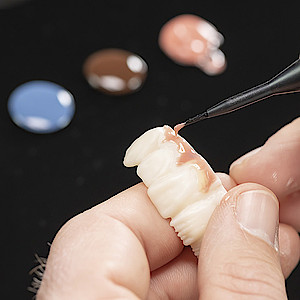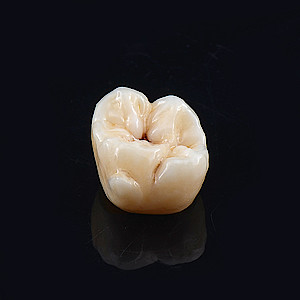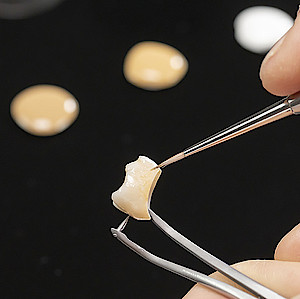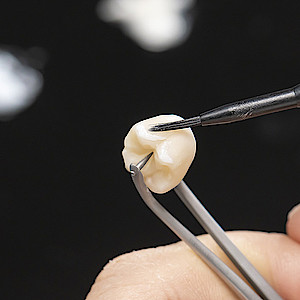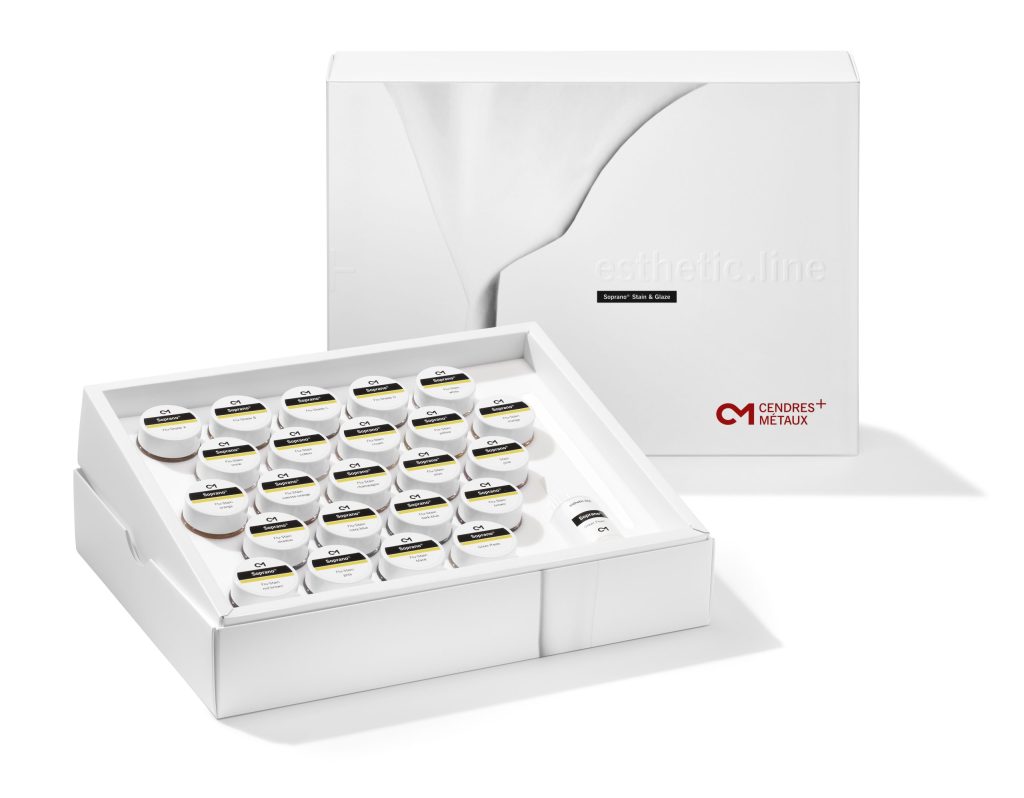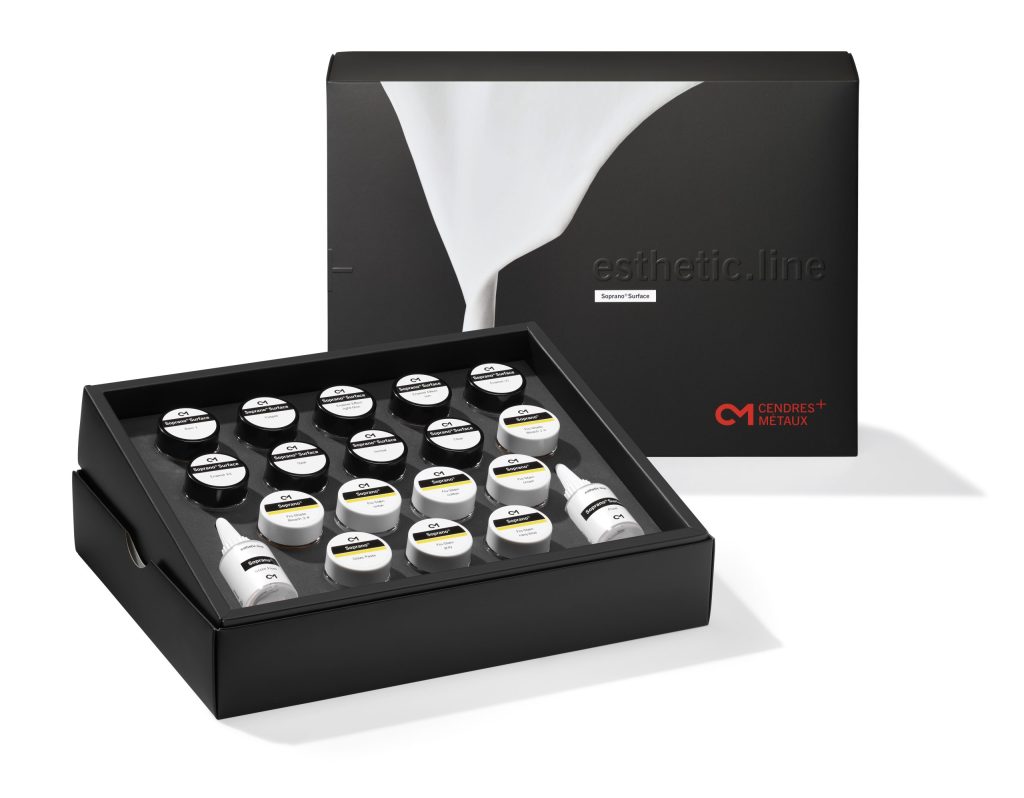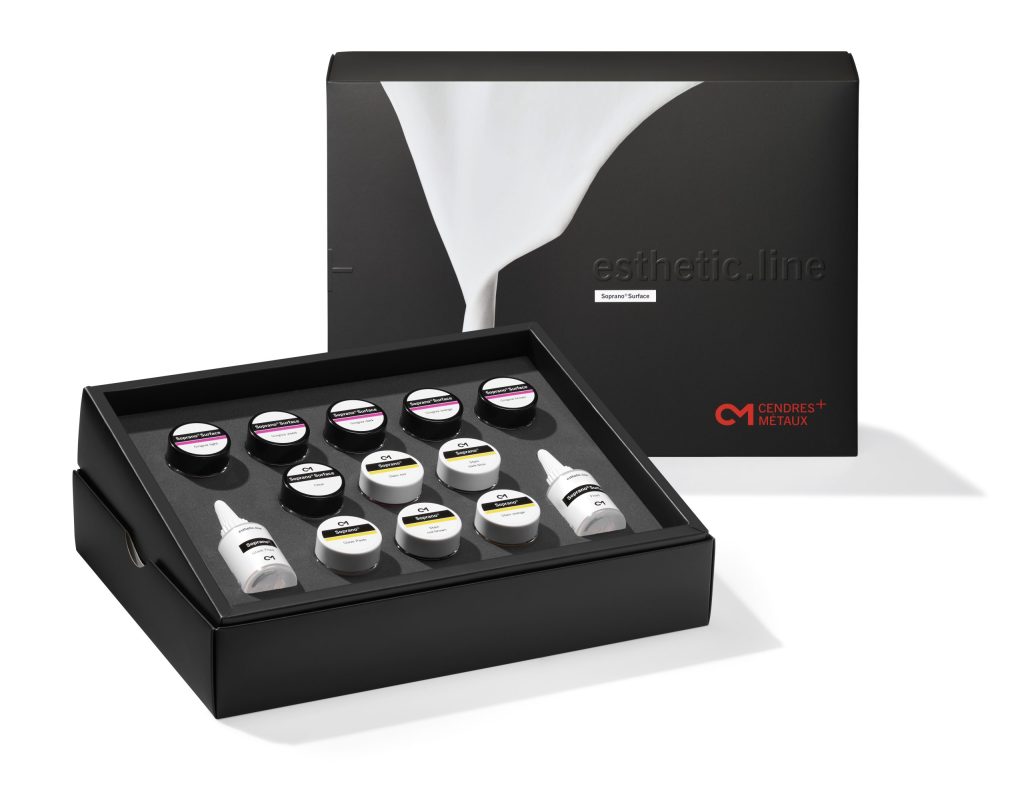Easy to use
Soprano® Surface is a ceramic for the structuring of crowns and bridges. The ready-to-use pastes have an optimal grain size which offers many advantages: Soprano® Surface can be applied easily and fast since the pastes can be used directly from the tin. The high stability of the material is also convincing – both during modelling and firing, the incorporated surface characteristics remain unchanged, thus significantly reducing the grinding effort. The colours of the pastes are also convincing in application. They are already visible during layering and remain unchanged after firing.
Individual, aesthetic results
Soprano® Surface enables individual shaping. Surface structures with depth effect can be incorporated. The transparency, opalescence and natural fluorescence of the material, which are effective from a layer thickness of 0.1 mm, also contribute to a natural result.
